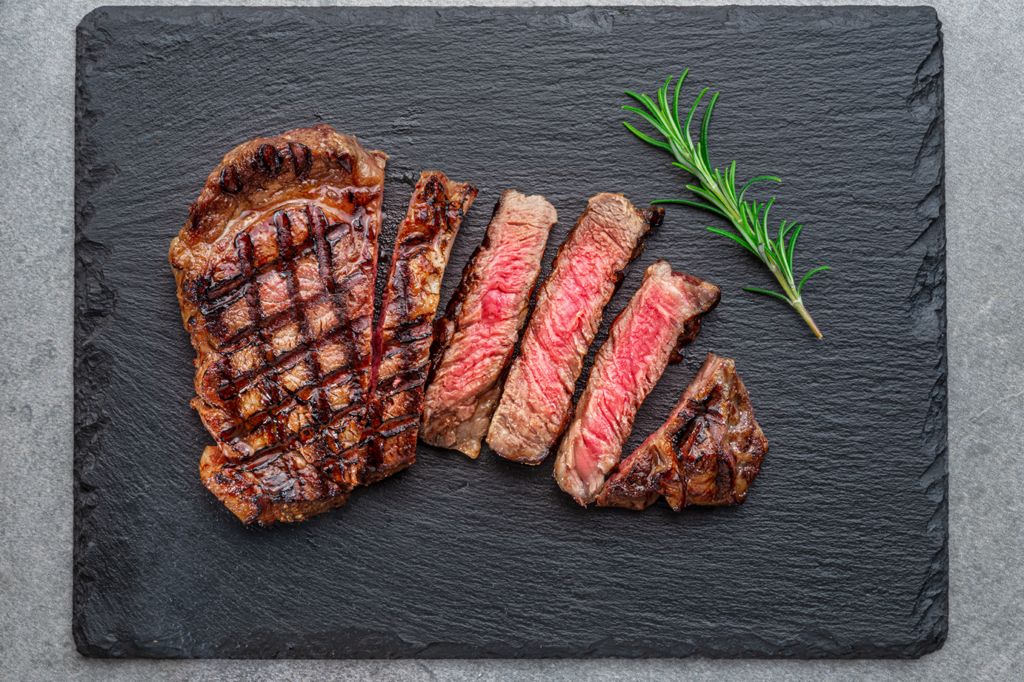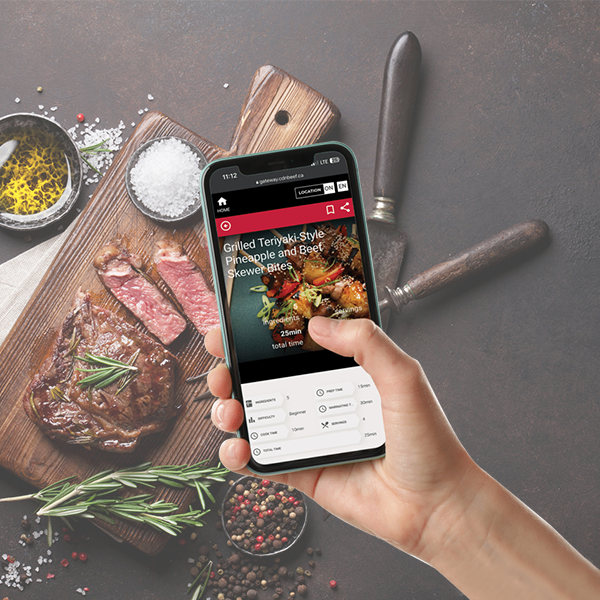
Beef, with its rich flavor and diverse cuts, has long been a cornerstone of culinary traditions worldwide. From tender steaks to hearty roasts, beef offers a spectrum of tastes and textures to delight any palate.
Moderately tender with good beefy flavour, Sirloin Tip is a leaner, more frugal option than premium oven roasts.
Oven Roasting (RECOMMENDED)
Marinating and Indirect-heat Barbecue Roasting (ALTERNATE)
From your favourite cuts of beef to new ones to try, beef has so much to enjoy! Explore all beef has to offer with recipes plus cook-along videos and nutrition info for every cut.
Clean – wash your hands, and kitchen food prep surfaces and utensils well.
Chill – keep perishables cold and refrigerate at 40°F (4˚C) at the most. Check the temperature with a refrigerator thermometer. Avoid packing your fridge – cold air must be able to circulate.
Separate – Don’t cross-contaminate. Keep cooked foods separate from raw foods, especially raw seafood, meats/poultry and eggs.
Cook – Cook foods to proper doneness. Temperature rules for beef doneness:
A digital instant read thermometer is an essential tool for a great cook and can work on all beef cuts. A programmable oven-safe thermometer is a great tool to make Oven Roast Beef doneness easy to manage.
| Medium-Rare | Medium | Well-Done |
|---|---|---|
| 145°F (63°C) | 160°F (71°C) | 170°F (77°C) |
Ground beef should be cooked thoroughly to an internal temperature of 160°F (71°C). Test cooked burger patties with a digital instant read thermometer inserted sideways into each patty to know the patties are done. Never eat ground beef rare or raw.
Don’t rely on the ‘colour test’ to know when meats are done (especially burgers and meatloaves).
Beef steaks and roasts can be enjoyed cooked from 145°F (63°C) for medium-rare, 160°F (71°C) for medium to 170°F (77°C) for well-done. Steaks should be turned twice or more while cooking to ensure even heating. Test for doneness using a digital instant read thermometer.
Thermometer Know-How Rules of Thumb:
Canadian Beef Quality GradesThe Canadian beef grading system helps ensure quality expectations are met every time. Canada’s top 3 grades represent 97% of the beef available for sale in Canada. Canada AA, AAA (including top tier AAA) and Canada Prime are similar to what you see referenced for the U.S. grades of Select, Choice and Prime.

A good value choice offering lower levels of marbling and typically fewer calories than Canada AAA and Prime Grades. Canada AA beef can be tender and flavourful and performs well with all popular cooking methods.

A great choice for high-quality beef. Canada AAA offers higher levels of marbling than Canada AA and is well suited for all popular cooking methods. Canada AAA will become a delicious family favourite when grilled, broiled, simmered or roasted to perfection.

Canadian beef brands that include only the most marbled (Top Tier) beef within the Canada AAA grade are an excellent choice for steakhouse-quality beef. These brands offer beef with the very best marbling, flavour and juiciness within the AAA grade.

An extraordinary choice for exclusive steakhouses, hotels and serious home chefs. Canada Prime is selected for maximum marbling, flavour and juiciness and only available in limited supply.
This lean steak is good for pan-searing, broiling, or grilling. Top Sirloin delivers great beef flavour and terrific tenderness at an intermediate price.
Grilling (RECOMMENDED)
Pan Searing (ALTERNATE)
Pan Searing with Oven Finish (For steaks 1-inch (2.5 cm) thick or greater, this is another cooking option) (ALTERNATE)
